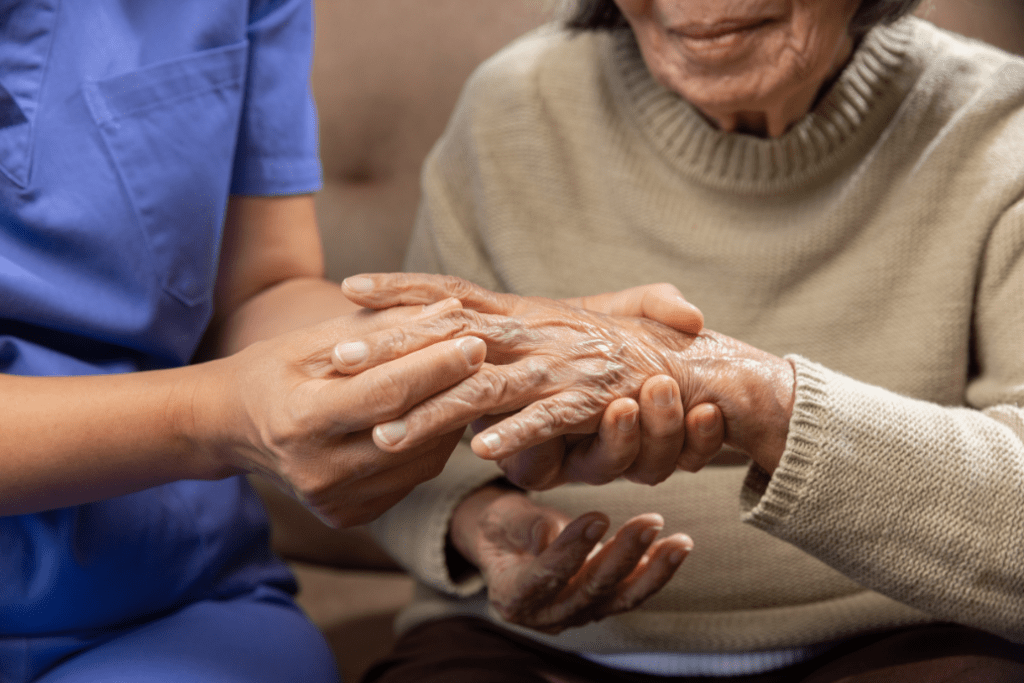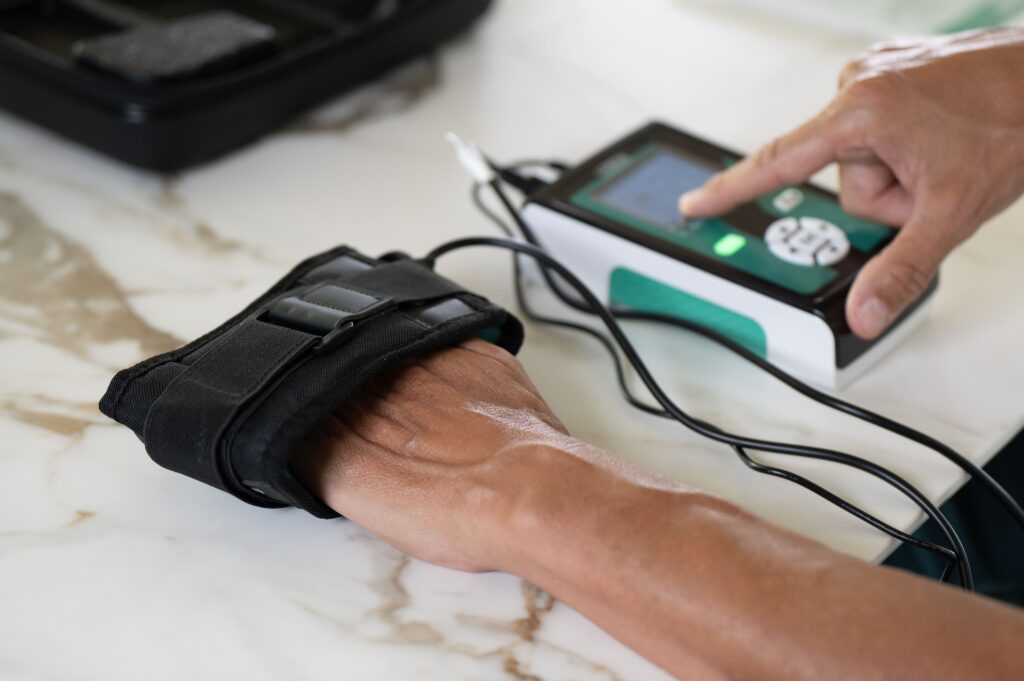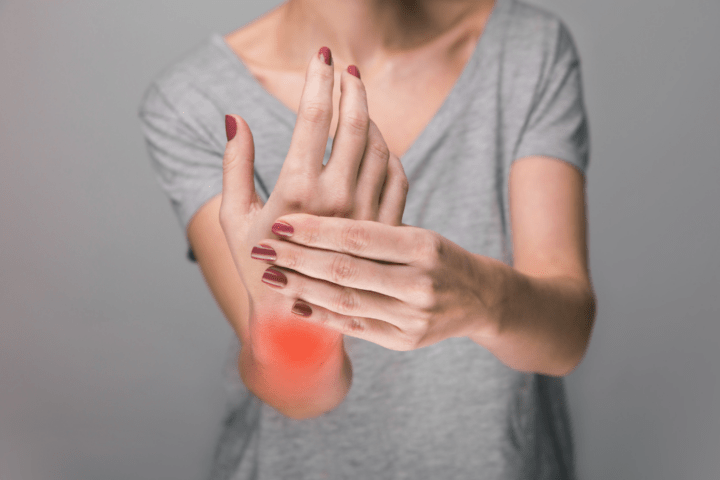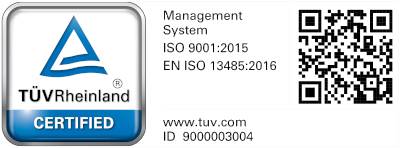Arthritis is an inflammatory condition involving the joints, the structures that join the bones. Arthritis literally means ‘aching joint’; in fact, this condition is characterised by swelling, inflammation, redness, stiffness and pain, as well as increased temperature in the affected area.
In severe cases, arthritis can lead to joint deformity.
How to tell if it is arthrosis or arthritis
It is crucial to distinguish arthritis from arthrosis, since confusion between the two diseases is common. In fact, although arthrosis has some features in common, it is not an inflammatory disease but a chronic degenerative form.
How many types of arthritis are there?
There are different forms of arthritis, with different causes and characteristics, including:
1. Rheumatoid arthritis
2. Psoriatic arthritis
3. Reactive arthritis
4. Septic arthritis
5. Gouty arthritis
6. Undifferentiated arthritis
Rheumatoid arthritis
Rheumatoid arthritis is the most common form. It is an inflammatory rheumatic disease of the synovial membrane, i.e. the connective membrane that surrounds the inner side of joints, particularly of the hand, wrist and forefoot. Rarely, this condition affects the spinal column.
Over the years, rheumatoid arthritis can also affect other connective tissues besides the joints, such as tendons, skin, pericardium, and lungs. Aggravating the sufferer’s clinical picture.
This condition can also affect the eyes, in fact it is often associated with Sjögren’s syndrome, which causes dry eyes and jaws.
But what are the symptoms of rheumatoid arthritis?
The joints appear swollen, stiff and deformed, especially at night and upon waking. Symptoms affecting the hands are: oedema, pain, in addition to the stiffness mentioned above; the joints of the feet may also be affected by pain, heat and swelling.
Other symptoms associated with the condition are fatigue, loss of joint function and muscle hypotrophy.
Psoriatic arthritis
Another form of arthritis is psoriatic arthritis, which, in one out of four cases, is very similar to rheumatoid arthritis. It is one of the most complex forms of this disease, characterised by chronic joint inflammation.
There are two types: polyarthritis of the fingers with a deforming tendency and axial rheumatism (inflammation of the sacro-iliac joints of the spine). It too manifests itself with circumscribed pain, swelling and joint stiffness.
Reactive arthritis
Reactive arthritis [1] is an inflammation of the joints that develops in response to an infection in another part of the body, such as the intestine or genital tract. It is not caused directly by bacteria in the joints, but by the immune system reacting to the infection. It is part of a group of diseases called seronegative spondyloarthropathies, which are also related to other problems such as ankylosing spondylitis. Symptoms may include joint pain and swelling, as well as eye and urinary tract problems. Non-steroidal anti-inflammatory drugs, sulfasalazine and sometimes drugs that suppress the immune system (such as methotrexate) can help treat symptoms.
Septic arthritis
Septic arthritis is an inflammation of a joint caused by an infection. Germs can get into the joint through blood, from a wound or from a nearby infection. It manifests as a swollen, hot, red and very painful joint, making movement difficult or impossible. Fever and chills may also appear. It is important to diagnose the infection quickly by examining the joint fluid and doing tests to identify the responsible germ. Prompt treatment with antibiotics is essential to avoid permanent damage.
Gouty arthritis
Gouty arthritis (microcrystalline arthritis) is a metabolic dysfunction followed by the deposition of uric acid crystals in the joints. This leads to sudden manifestations of pain with rapid, but transient swelling of the joint. This condition responds very well to treatment with non-steroidal anti-inflammatory drugs and colchicine.
Undifferentiated arthritis
Undifferentiated arthritis [2] manifests itself with typical symptoms of a joint inflammation, such as pain, swelling, redness and heat, but is not covered by a precise diagnosis. This can occur especially at the beginning of the disease, when it has not yet fully developed. In some cases it may remain unchanged over time. For this reason, the doctor may classify the condition as ‘undifferentiated arthritis’ in order to have a diagnostic reference, although not a definitive one.
The diagnosis of arthritis
As we have already seen, arthritis is a disease that manifests itself gradually. It is often difficult to recognise the symptoms when one is still in the early stages.
However, if you notice joint swelling that persists for more than 6 weeks, you should consult your doctor.
Distinguishing the various forms of arthritis can be complicated. This is why it is important to assess the symptoms and exclude certain types, as well as the presence of other diseases.
There is no single test for this. In fact, the doctor can choose different approaches for the diagnostic process.
Once a medical history has been taken, the most common tests are blood and urine tests. Another analysis to be performed is that of the synovial fluid in the joints.
X-rays, computed tomography and magnetic resonance imaging may also be required for diagnosis.
In addition, it may be useful to perform an ultrasound scan or, in some cases, a small arthroscopic operation.

What causes arthritis
The causes of arthritis can be traumatic, metabolic, infectious, autoimmune and idiopathic.
In the most common case, rheumatoid arthritis, the disease depends on a malfunction of the immune system.
It is not yet known for sure why the immune system attacks its own tissues, but risk factors include genetic and environmental ones.
Other possible risk factors are related to age, gender, contraceptive intake, smoking and other hormonal and dietary factors. For example, women are at greater risk than men.
As for the causes of the other types of arthritis, we refer you to the paragraphs above where we have listed the various types.
Arthritis’ symptoms, the most common ones
The most common symptoms of arthritis are:
● Pain
● Swelling
● Heat
● Redness
● Joint stiffness
● Loss of joint function
These usually develop gradually over an interval of a few weeks. In some cases, however, it cannot be excluded that the disease worsens more quickly than expected.
In the case of septic arthritis other obvious symptoms are fever and chills. In gouty arthritis, on the other hand, there are also swellings, referred to as ‘tophi’.
Other possible symptoms are:
● Feeling of tiredness
● Weight loss
● Muscle soreness
Available arthritis therapies
There is currently no definitive cure for arthritis. There are, however, certain therapies that can reduce the pain felt by patients and improve their mobility.
First of all, the patient must alternate periods of rest with adequate physical activity. This is to avoid consequences, such as weight gain, that favour the development of arthritis.
With regard to drug therapy, initially, non-steroidal anti-inflammatory drugs (NSAIDs) and corticosteroids can be taken.
In the treatment of psoriatic arthritis in the milder forms, NSAIDs are often the only therapy used.
It is important, however, not to continue taking these drugs over a long period in order not to suffer their side effects.
NSAIDs can contribute to stomach aches, hypersensitivity and ulcers. Corticosteroids, on the other hand, can lead to diabetes, hypertension, facial swelling, bone thinning and other side effects.
In some special cases and exclusively for patients with rheumatoid arthritis, the doctor may prescribe biological drugs.
An important role in the treatment of arthritis is played by instrumental physical therapies, in particular: magnetotherapy, electrotherapy and ultrasound therapy. Let’s see them in detail!
Magnetotherapy for arthritis : how it works
PEMF (pulsed electromagnetic fields) magnetotherapy helps reduce pain and inflammation in bones, muscles and joints. The action of pulsed electromagnetic fields helps restore the balance and proper functioning of the human body’s cells.
It is therefore ideal for treating traumatic and chronic conditions, including arthritis. Our certified home-use magnetotherapy devices feature pre-set programs, based on clinical studies, for the treatment of numerous conditions. The arthritis program is designed precisely for reducing pain and slowing down the degenerative process, with the aim of increasing joint mobility. This therapy is also ideal for treating rheumatoid arthritis.
To find out more about magnetotherapy and its benefits, we refer you to the dedicated blog article.

Electrotherapy for the treatment of arthritis
Another therapy that, thanks to our home devices, can be carried out in the comfort of your home is electrotherapy. By transmitting micro-impulses to the human body, with different frequencies, widths and intensities, it enables faster recovery and reduces pain.
In particular, electrostimulators with TENS programs enable an antalgic action, relieving pain and restoring physiological conditions. They are therefore suitable for the treatment of arthritis and periarthritis, conditions that reduce mobility. Immobility reduces metabolism, preventing the elimination of substances that cause pain, creating a vicious circle. TENS, in addition to relieving pain, stimulates muscles, improving metabolism, circulation, oxygenation and tissue nourishment. Combining TENS with muscle stimulation further enhances these benefits.
Would you like to learn more about our range of electrostimulation equipment?
Click here to read our in-depth review!
Ultrasound therapy for arthritis
Ultrasound therapy transfers energy to the tissues of the human body, promoting microcirculation and helping to properly eliminate excess subcutaneous fluids. Thanks to its action, it is possible to improve the condition of those suffering from arthritis and periarthritis.
If your doctor has prescribed ultrasound therapy sessions for you, know that you can benefit from the effects of ultrasound to reduce pain and inflammation. If, on the other hand, you are considering purchasing a professional ultrasound therapy device for your practice that can also treat arthritis, we refer you to the dedicated section of our website where you can find more information on our I-TECH UT2 and I-TECH UE devices.
Foods to avoid for arthrosis and arthritis
In addition to the therapy/treatment indicated by the doctor, it is important to follow a diet consisting of foods that are not fattening and do not increase inflammation. The following are therefore not recommended –
– red meat
– preserved foods
– foods containing gluten
– animal proteins
Millions of people around the world today suffer from arthritis. A large percentage of them are suffering from rheumatoid arthritis. By 2050, more than 30 million are expected to suffer from it (about 17 million in 2020) [3]. These numbers are constantly growing, which is why it is important to do prevention and be aware of the possibility of therapy in the comfort of home with safe and easy-to-use devices. With the awareness of improving one’s quality of life and having a human support from which one can receive assistance and advice on the basis of one’s own needs, to purchase an electromedical device – always after consulting one’s doctor!
Do you have any questions?
Bibliography
[1] https://www.msdmanuals.com/it/casa/disturbi-di-ossa-articolazioni-e-muscoli/patologie-articolari/artrite-reattiva
[2] https://hemove.org/sito-informativo-malattie-reumatiche/malattie-reumatiche/articolari/artriti/artrite-indifferenziata/
[3] https://www.healthdata.org/research-analysis/library/global-regional-and-national-burden-rheumatoid-arthritis-1990-2020-and






